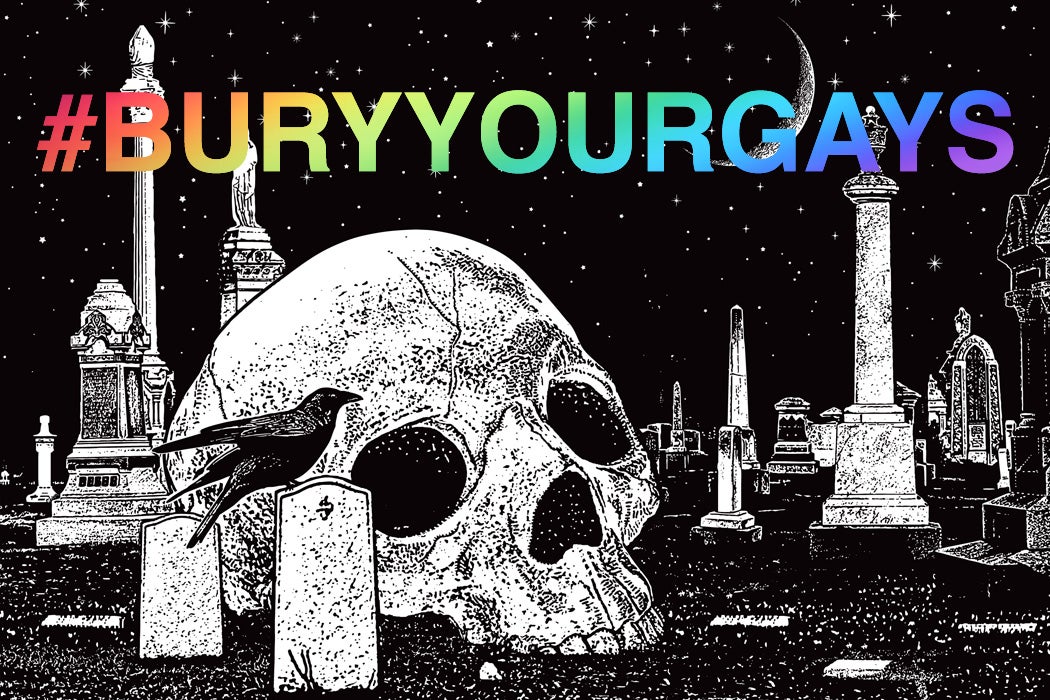For almost as long as there has been television, there have been fans who want to change how production companies and networks handle their favorite shows and characters. Most famously, the “Save Star Trek” letter-writing campaign of 1967–68 compelled NBC to renew the show for the 1968–69 season. Such high-profile, high-pressure fan campaigns continue into the present, with the addition at least two new elements: queer fandom and the hashtag.
Though openly LGBTQ+ characters have appeared on American television since the 1970s, only in recent years has the cultural position of LGBTQ+ people strengthened enough to affect industry practices, according to communications professor Annemarie Navar-Gill and media professor Mel Stanfill. From that position of (relative) strength, viewers have called on writers to create storylines that respect LGBTQ+ characters, whether they be created for sitcoms, made-for-television movies, or police dramas.
Many viewers have had enough with the “bury your gays” trope, pointing out that queer characters tend to die more than cis-gender heterosexual characters. In an effort to urge productions to do better, fans started using hashtag campaigns, leveraging the social mediascape against the entertainment industry. For instance, after the character Lexa died in the show The 100 in 2016, fans used hashtags like #LexaDeservedBetter to call out the show’s writers and producers for killing off this queer female character.
“Activity on the organic hashtags built over time and petered out slowly, but the organized campaigns show a nearly symmetrical rise and fall in activity, indicating intentional harnessing of Twitter’s ‘trending topics’ affordance,” Navar-Gill and Stanfill write.
Critiques of the killing of LGBTQ+ characters, as well as other tragedies that affect them, also suggest that fans believe that the deaths may just be a way to avoid giving them a nuanced storyline. Fans wonder: how can one raise awareness about the importance of visibility if queer characters, especially queer characters of color, are just killed off?
“Disregard for LGBTQ+ folks was seen as particularly offensive because of what tweeters characterized as queerbaiting,” Navar-Gill and Stanfill explain. When a production courts a viewership interested in LGBTQ+ narratives yet refuses to clearly confirm a (supposedly) queer character’s identity, fans conclude that the rainbow community may be seen as a “valued market,” but it’s a market that can be ignored if convenient.
The repetition of queer hashtag campaigns highlights the fact that fans know that negative critiques of television shows can gain attention on social media and possibly be a trigger for change, forcing the industry to address identified instances of queer-baiting. Navar-Gill and Stanfill find that hashtag campaigns also offer solutions to treating LGBTQ+ characters better.
“Ideas of how to do better arose from a usually implicit argument that media has cultural power and therefore responsibility,” Navar-Gill and Stanfill write. “As one fan put it, ‘Open your eyes, #RepresentationMatters and you have a responsibility in shaping public opinion! LGBTQ FANS DESERVE RESPECT.’”
In these social media campaigns, queer fans of color have also called out how queer characters of color, particularly Black queer characters, tend to be treated worse than their queer white counterparts.
Weekly Newsletter
“Network analysis suggests that #BlackLGBTDeserveToBe also gained traction outside of Twitter’s fandom communities, largely through pickup by Black Twitter,” Navar-Gill and Stanfill explain.
Whether or not these queer fan hashtags have caused a change in the industry is hard to tell, but they’ve certainly raised a lot of questions about how LGBTQ+ characters are treated in shows.
“Messaging around what marginalized groups deserve suggests that the practice of queer fan hashtag campaigns is moving from responding to texts to contesting an oppressive representational system,” Navar-Gill and Stanfill write. “There is a sense that broad-based change is needed.”







